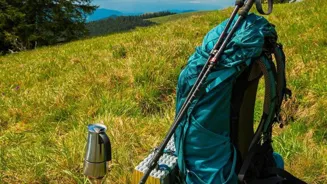Unleash Your Wanderlust: Discover the Must-Have Hiking Gear for Epic Outdoor Adventures! Read More for Trail-Blazing Tips
For all you Bharatdesh explorers and trekking enthusiasts, getting ready for a Himalayan
hike or a leisurely trek through the Western Ghats requires more than just enthusiasm. Having the right gear can make the difference between a memorable adventure and a miserable experience.
Selecting the right gear ensures safety and comfort.
Essential gear for safe and comfortable hiking adventures
Selecting the right hiking gear involves considering the terrain, weather conditions, and duration of your trip. Whether you are planning a day hike or a multi-day trek, packing the right equipment is essential.
Proper gear ensures you are prepared for unexpected challenges and can fully enjoy the beauty of nature without any discomfort. Here’s a comprehensive guide to the must-have hiking gear to help you make the most of your outdoor escapades, keeping you safe and comfortable every step of the way.
From sturdy footwear to essential navigation tools, we'll cover everything you need to conquer the trails with confidence.
Proper footwear crucial for safe and comfortable hiking
First and foremost, your footwear is your most important investment. A comfortable and supportive pair of hiking boots can prevent blisters, ankle sprains, and other foot injuries.
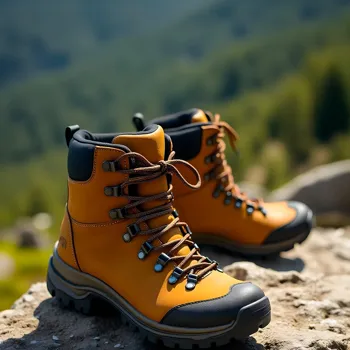
Look for boots with good ankle support, a durable outsole for traction, and waterproof or water-resistant properties to keep your feet dry. Break in your boots before your hike to avoid discomfort on the trail.
For shorter, less demanding hikes, trail-running shoes can be a lightweight and breathable alternative. Remember to wear moisture-wicking socks to keep your feet dry and prevent blisters. Proper footwear makes all the difference on your hiking journey.
Choose the right backpack based on hike length and nature
Selecting the right backpack depends on the length and nature of your hike. For day hikes, a 20-30 liter backpack should suffice, providing enough space for water, snacks, a first-aid kit, and extra layers of clothing.
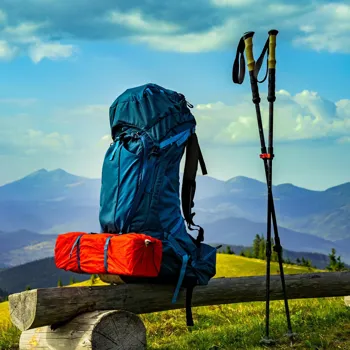
Multi-day treks require larger backpacks, typically ranging from 50 to 70 liters, capable of carrying camping gear, food, and additional supplies. Look for backpacks with adjustable straps, padded hip belts, and multiple compartments to distribute weight evenly and keep your gear organized.
Ensure that the backpack fits well and is comfortable to carry for extended periods.
Dressing in layers is crucial for Indian mountain hikes
The weather in the Indian mountains can change rapidly, so dressing in layers is crucial. Start with a moisture-wicking base layer to keep sweat away from your skin. Add an insulating layer, such as a fleece or down jacket, for warmth.
A waterproof and windproof outer layer is essential for protection against rain and wind. Don't forget a hat and gloves, even in warmer months, as temperatures can drop significantly at higher altitudes. Choose lightweight, quick-drying fabrics that are easy to pack and won't weigh you down.
Dressing in layers allows you to adapt to changing conditions and stay comfortable throughout your hike.
Essential navigation tools for safe hiking: map, compass, GPS
Even on well-marked trails, it’s essential to have reliable navigation tools. A map and compass are fundamental skills, especially in remote areas where GPS signals may be unreliable. Learn how to read a map and use a compass before your hike.
A GPS device or smartphone with a GPS app can also be helpful, but remember to carry extra batteries or a power bank. Familiarize yourself with the trail and any potential hazards before setting out. Knowing your way through the terrain keeps you safe on your journey.
Hiking first-aid kit essentials and preparation tips
A well-stocked first-aid kit is a must-have for any hike. Include essentials such as bandages, antiseptic wipes, pain relievers, blister treatment, and any personal medications. Carry a whistle for signaling in case of emergency, and a headlamp or flashlight with extra batteries.
Sunscreen, insect repellent, and a small multi-tool can also come in handy. Consider taking a basic first-aid course to learn how to handle common hiking injuries. Being prepared for emergencies can make all the difference in a remote setting.
Stay hydrated and nourished for sustained energy during hikes
Staying hydrated and nourished is crucial for maintaining energy levels and preventing fatigue. Carry enough water for your hike, or consider using a water filter or purification tablets to replenish your supply from natural sources.
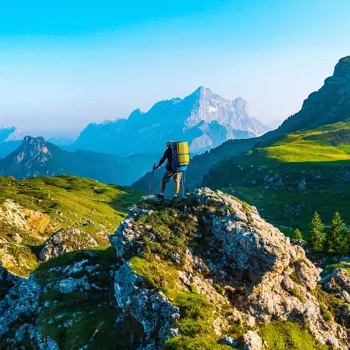
High-energy snacks such as trail mix, energy bars, and nuts can provide a quick boost when you need it. Avoid heavy, sugary snacks that can lead to energy crashes. Plan your meals and snacks carefully to ensure you have enough fuel for the duration of your hike.
Invest in quality gear for safe and enjoyable hiking in India
Investing in high-quality hiking gear is an investment in your safety and enjoyment of the outdoors. By choosing the right equipment and preparing for all conditions, you can embark on unforgettable adventures in the incredible landscapes of India.
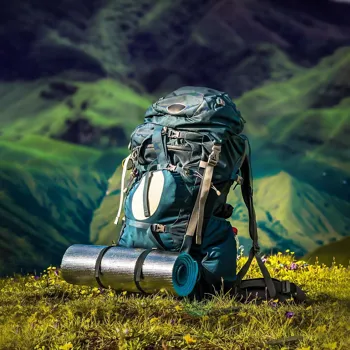
Remember to always check the weather forecast, inform someone of your hiking plans, and leave no trace behind. Happy trekking!
